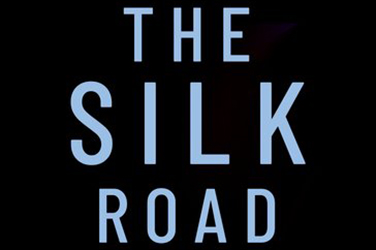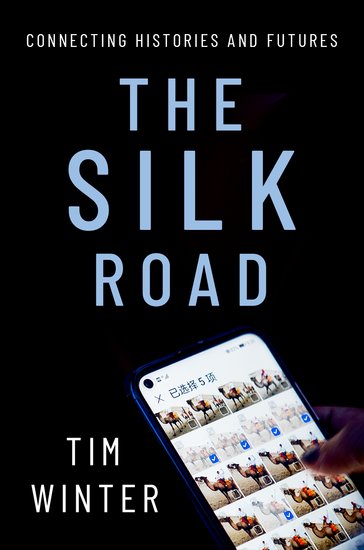
- Free Article: No
- Contents Category: History
- Review Article: Yes
- Article Title: More than a trade route
- Article Subtitle: The Silk Road as metaphor
- Online Only: No
- Custom Highlight Text:
The Silk Road is not one place, nor is it a particular route for travel, trade, and cross-cultural exchange. It is an idea, and a powerful one at that, as Tim Winter’s Silk Road: Connecting histories and futures shows. The concept of the Seidenstraße was popularised by Ferdinand von Richthofen in the 1870s to define the trade routes westwards from Han China in the ancient Greco-Roman world. Since then scholars have argued for many Silk Roads over land and sea between Africa, Eurasia, and the islands around those landmasses through which goods and ideas have been exchanged for at least two millennia.
- Featured Image (400px * 250px):

- Alt Tag (Featured Image): Robert Wellington reviews 'The Silk Road: Connecting histories and futures' by Tim Winter
- Book 1 Title: The Silk Road
- Book 1 Subtitle: Connecting histories and futures
- Book 1 Biblio: Oxford University Press, £18.99 pb, 264 pp
- Book 1 Cover Small (400 x 600):

That section of Winter’s book will pique the interest of those who have been following recent debates about looted artefacts in European museums. The ABC podcast hosted by Marc Fennell called Stuff the British Stole is a case in point, along with its counterpoint: the BBC’s The History of the World in 100 Objects podcast co-produced with the British Museum.
The Silk Road entered the popular imagination in the West in the 1930s, around the time that Marco Polo’s travels became a favourite subject for Hollywood. The story of a Venetian merchant adventurer who travelled through Central Asia to China at the end of the thirteenth century became a quintessential story of the European encounter with the exotic Other in the perfumed orient, a land of spices, silks, carpets, porcelains, and jewels. The fascination with the ‘exotic’ East led many to follow in Marco Polo’s footsteps in the age of mass tourism. There is plenty of anecdotal evidence to support this, and much more that Winter includes in his study. The popularity of Joanna Lumley’s Silk Road Adventure, aired by the ABC in 2018, suggests that travelling the Silk Road is still a fantasy adventure holiday for many.
The creation of the Silk Road discourse in the West is covered in the first two parts of Winter’s book. The subsequent three sections are where the real innovation of his analysis lies. He presents a compelling argument that the boom in Silk Road studies from the 1990s to the present day has shifted focus away from the Europe to Asia within the academy. A new conception of the ‘Maritime Silk Road’ mooted by Japanese scholars in the 1950s incorporated the island nation of Japan into the story of Eurasian exchange. The culmination of the Japanese focus on Silk Road studies was an exhibition in Nara (1988), now defined as a key node in historical international trade; thirty tonnes of sand from Central Asia were shipped to the museum to provide a tangible material connection of lands separated by seas. This consolidated Japan’s cultural reintegration into the global community following World War II. As Winter cogently argues, the focus of Silk Road studies shifts in tandem with ‘the geographic and institutional parameters of conflict and peace-making’.
The book culminates in a fascinating analysis of China’s Silk Road revival. It is the framing idea for Xi Jinping’s Belt and Road Initiative, an ambitious infrastructure and development strategy that aims to place China at the centre of a global network of trade and diplomacy. China’s leader announced the initiative in 2013. Sharing a Common Future: Exhibition of treasures from national museums along the Silk Road, held at the National Museum of China in Beijing in 2019, made the concept of a Silk Road revival explicit. Each country that lent works to the exhibition was a ‘Belt and Road’ partner, and the objects on show expanded the scope of Silk Road artifacts to include transcultural European items of clothing, furniture, clocks, and dinnerware as a result.
Winter leads the reader to the intriguing conclusion that the Silk Road has become a concept aligned to geopolitics, and a metaphor for ‘China’s international ambitions.’ In Xi Jinping’s China, ‘the Silk Road and its associated metaphors conceal its geopolitical qualities and intentionally render infrastructure, multinational banking, and development aid as benign and of benefit to all’. Winter’s important book takes us through the formation of Silk Road studies from the Western interest in Eastern material culture, to the age of adventure tourism, to soft power and diplomacy in China today. It is a revelatory study, dispelling orientalist myths and cross-cultural accord, and showing how the Silk Road functions as a metonym of cultural exchange to buttress the diplomatic and economic interests of those who promote its study


Comments powered by CComment